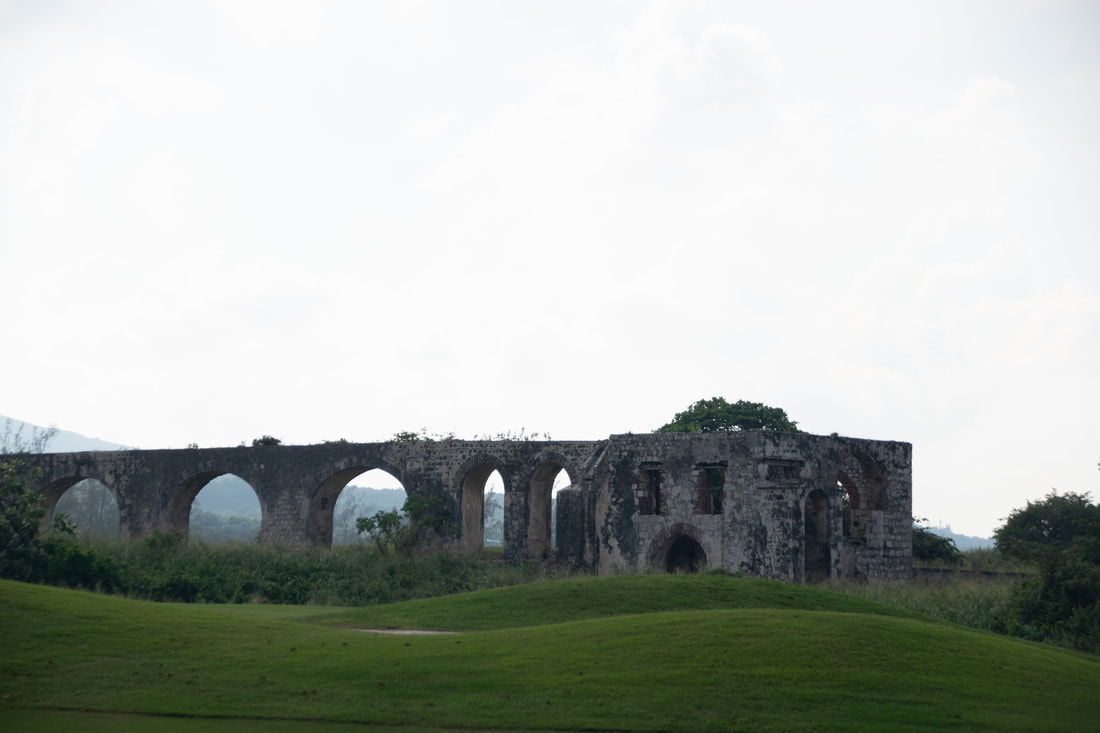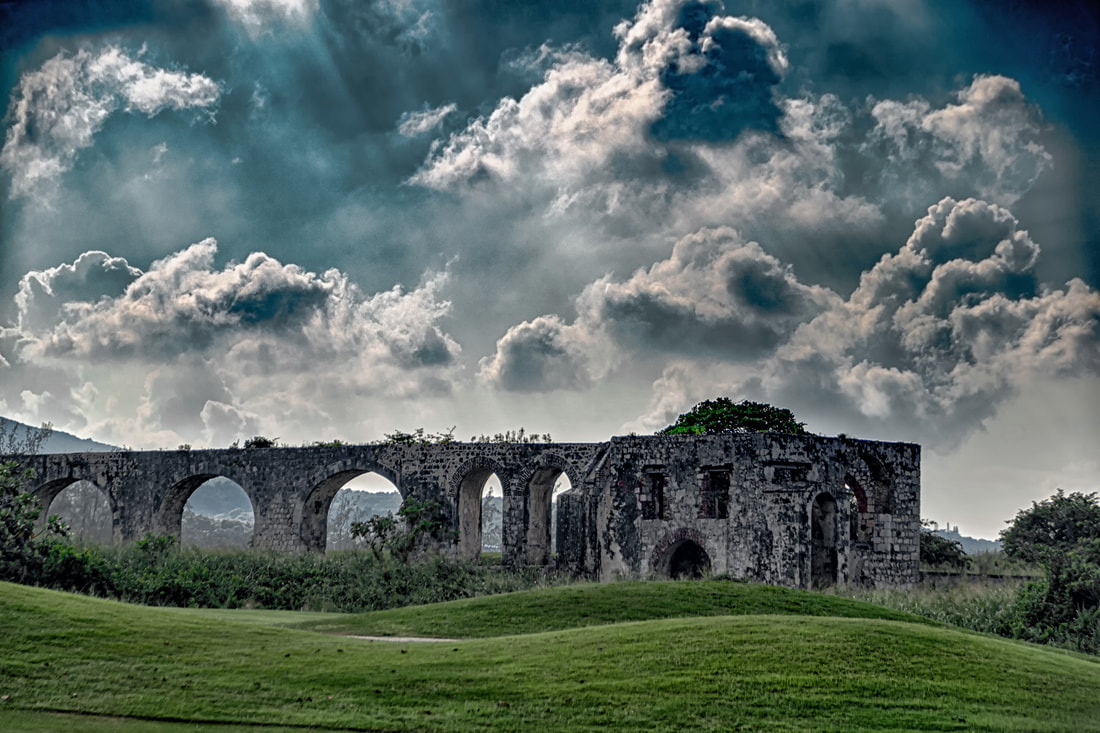You will want to use image processing software that allows adjustments to highlights and dehazing, always being careful not to overdo it. Some programs will engage in automatic high dynamic range (HDR) processing that all too often turns the image into something resembling a greeting card. You need to satisfy your eye as to what looks good. Note that you are not inventing anything; you are using these filters to bring out what is there. Other filters, such as exposure or using the luminance filter for blue, can also help. See below.
|
Suppose you find an interesting structure in a landscape, take the picture, and get a photo like the one below. One recommended way to photograph something like this is to put your camera on a tripod, take several pictures from the exact same location, exposing in one for the sky, in another for the structure, and still another for the grass. But you don’t always have your tripod or that ability. The general rule is expose for the shadows, develop for the highlights, so you can capture the detail. So what else can you do? You will want to use image processing software that allows adjustments to highlights and dehazing, always being careful not to overdo it. Some programs will engage in automatic high dynamic range (HDR) processing that all too often turns the image into something resembling a greeting card. You need to satisfy your eye as to what looks good. Note that you are not inventing anything; you are using these filters to bring out what is there. Other filters, such as exposure or using the luminance filter for blue, can also help. See below. If you pay attention to the sky and look for the clouds, by using your post processing software you will find the picture that was there but lurking beneath the surface.
0 Comments
|
AuthorSteven Richman is an attorney practicing in New Jersey. He has lectured before photography clubs on various topics, including the legal rights of photographers. His photography has been exhibited in museums, is in private collections, and is also represented in the permanent collection of the New Jersey State Museum. Archives
December 2022
|

